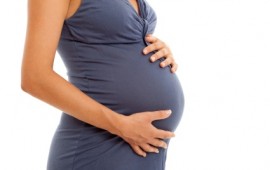Post-Pregnancy Weight Loss
Author: Shannon Miller Lifestyle

Along with the stress of having a new baby, a new mother usually has some baby weight to take off.
This can be a very stressful adventure, so keep a couple of things in mind.
- It took nine months to put that weight on!
- Your body is still undergoing natural changes in shape, due to fluctuating hormones and maternal duties, for a year!
Don’t give yourself a strict time limit to get back into your pre-pregnancy clothes. It is a possibility that weight loss will take a year after pregnancy, even if your weight goes down right away. It’s also possible that your body has changed so that your clothes will never fit the same again. This is part of the beauty of motherhood. Accept your new body with love and care.
When approaching your eating policy for weight loss, the same is true as it was when you were pregnant, especially if you are breast feeding, which is:
- Make sure anything you put in your body is also good for your child.
- Eat natural foods without too many processed ingredients or hormones.
- Eat often enough so that you do not run out of steam in the middle of a long day, or long night.
Most women will get the OK from their doctor to begin an exercise program at 6 to 8 weeks post-partum. Don’t jump the gun on him. There are reasons that you really should wait for the OK after pregnancy, especially for the core and pelvic region to recover. If you had a caesarian section, wear your brace or splint that the hospital or doctor gave you during those weeks. It will help the muscles affected by the incision heal.
Now, whether you had a caesarian or not, you may have diastasis recti. This is a division in the natural line down the center of the rectus abdominus. Every woman should check to see if she has diastasis recti before beginning any exercise program post-partum.
To check for Diastasis Recti:
1.Lie on your back with feet flat and knees up.
2. Take a deep breath into your abdomen
3. As you exhale, raise your chin toward your chest, raise your shoulders slightly off the floor, and push the air out of your abdomen as much as you can.
4. Use your fingers around your naval first, and then start walking your fingers up and down the center of your abdomen, toward your ribs, and then down toward your pelvis. Diastasis recti feels like there is space between your muscles. You can feel a ridge, and you can usually see it, too.
If you find you have diastasis recti, make sure to mention it to your doctor. Ask what he recommends and ask if he thinks you also have an umbilical hernia. The umbilical hernia affects how the diastasis will heal. In most cases, the doctor will recommend having the hernia surgically removed from the wall of the abdomen. He might also recommend a surgery to close up the diastasis.
Many times, diastasis recti can be healed through an exercise program. Diastasis Rehab is one such company that focuses on exercise to heal diastasis. You can also see a personal trainer that emphasizes post partum exercise, like Carrie Harper of CarrieFit. Carrie recommends wearing a splint or brace for at least 6 weeks while working on specific exercises targeting the areas around the rectus abdominus. During the healing time, basic crunches and other typical abdominal exercises are not recommended.
Easing into an exercise routine is also recommended, as in Shannon Miller’s post partum workout. Walking with the baby in a stroller is a great start, as is starting a program with a post partum company, like Stroller Strides.
SML TIP: Track your steps with a Pedometer that you can get FOR FREE with the Shannon Miller Walk-Fit Program!
After pregnancy, moms should tone up with basic toning exercises and mind-body exercise like yoga. Be careful of poses that cause stress on the core too soon. Exercises in yoga and Pilates can help strengthen the pelvic floor, which is very important post partum.
